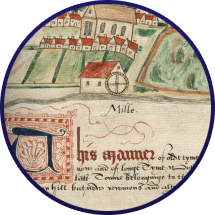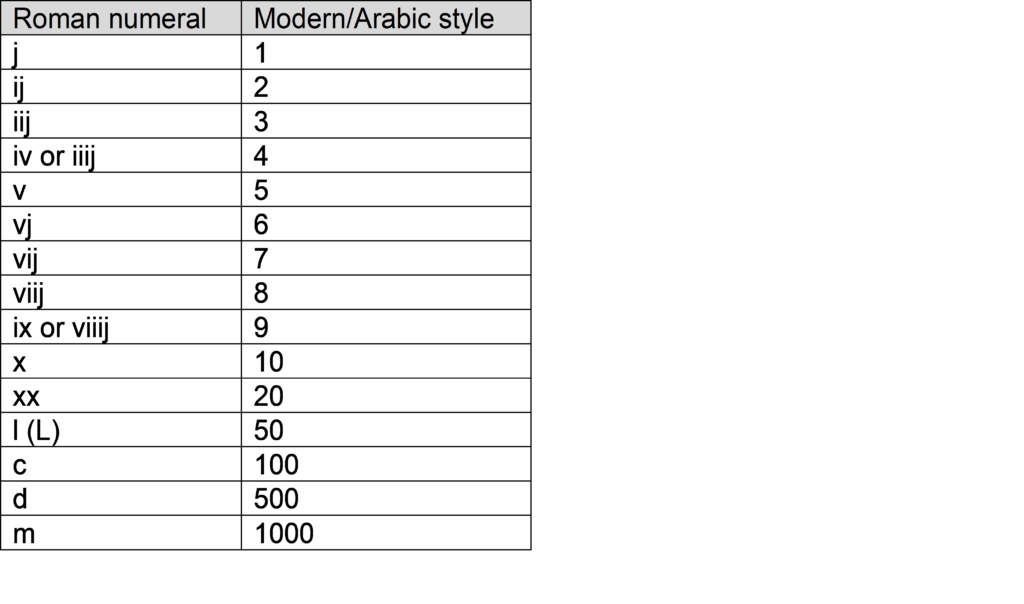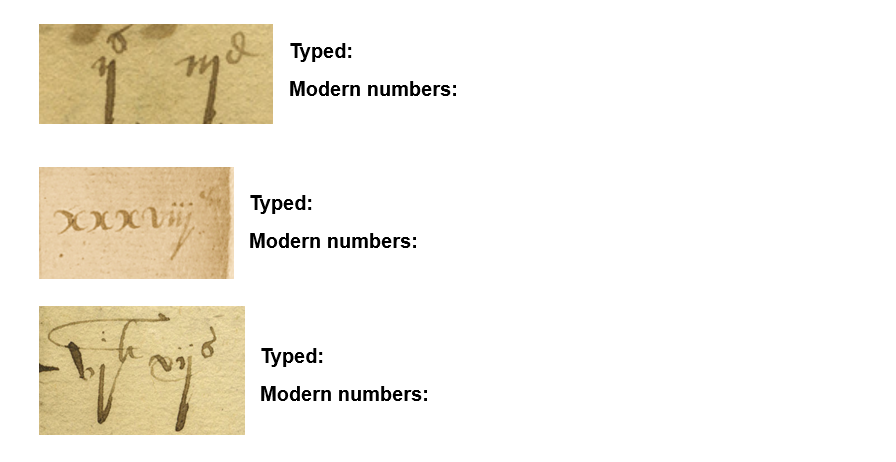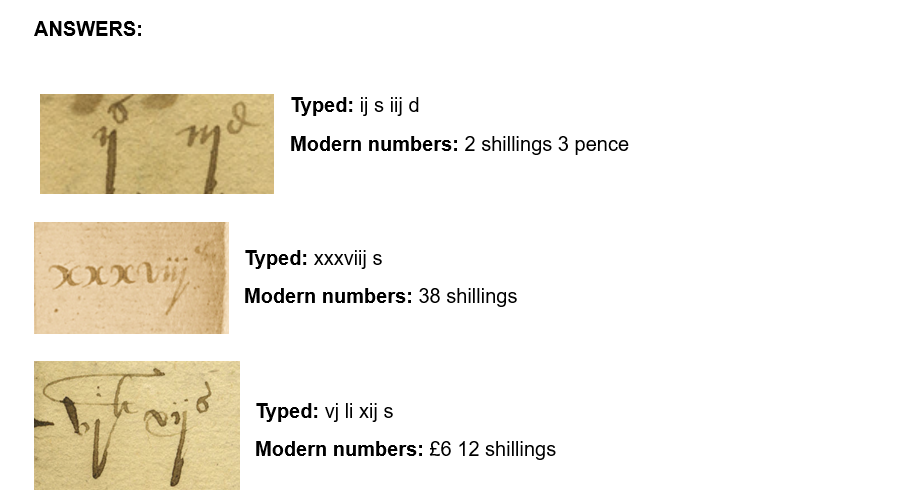Everyday Life in a Northumbrian Manor
All Manor of Things: An introduction to manors and their documents

Roman Numerals
This video talks through the content of this section.
In many manorial documents, particularly earlier examples, you will find numbers written as Roman numerals. Our modern style numbers can be used as well (1, 2, 3, etc.), and in some cases the numbers may be written as words. This section will explain the different types of Roman numerals you may find in manorial documents, with a chance to test your knowledge as you go.
Roman numerals can help us to understand:
- Dates – years, months and days
- Currency – amercement fines, rents
- Quantities – land measurements or weights.
Here is a basic guide to Roman numerals to get you started:
Anyone who has worked with classical roman numerals will notice some differences in the above table:
- In documents, Roman numerals are often written in lower case. Note: while it is tempting to use the dots above the “i”s to guide you, do not rely on them, the scribes were not consistent in including them!
- The use of a long ‘i’, which looks like a modern “j”. This is just another form of “i” for ‘1’ and tells you it is the end of the numeral. For example, if you have £4 and 3p written in numerals, that would be iiij li and iij d.
- The numerals for 4 and 9 are sometimes written out in full: you may be used to seeing “iv” for “4”, for example, but do note, they could write “iiij” – the trick is to count the lines, and know that four of those is not necessarily a mistake.
To translate your Roman numerals into modern Arabic numbers, it is just a case of learning what each of the letters mean (see the table above) and remembering these rules:
- If you have a large number followed by small number. This should be added together.
For example: vj = 5 + 1 = 6
- If you have a small number followed by large number, the small number should be subtracted from the larger number.
For example: iv = 5 – 1 = 4
- If you have a number followed by number of equal value, again this should be added.
For example: iij = i + i + i = 3
- If faced with a large number, you just need to break it down.
For example: mdcccxliij (1000 + 500 + 300 + 40 + 3) or 1843
Activity – Quiz Time!
Test your knowledge of Roman Numerals so far! The questions can be found in the first drop down.
The answer to each question is either A, B, or C. Find the answers in the drop down below.
QUIZ TIME
Question 1. The penalty for late rent in one document is set at x pence per week. What is the penalty?
a) 5p
b) 10p
c) 15p
d) 20p
Question 2. A tenant is required to provide iij days of labour per month to the Lord of the Manor. How many days is this?
a) 1
b) 2
c) 3
d) 4
Question 3. The year mdxxxij is recorded as the date for when a new manor house was built. What year is this?
a) 1423
b) 1532
c) 1632
d) 1732
Question 1. The penalty for late rent in one document is set at x pence per week. What is the penalty?
b) 10p
Question 2. A tenant is required to provide iij days of labour per month to the Lord of the Manor. How many days is this?
c) 3
Question 3. The year mdxxxij is recorded as the date for when a new manor house was built. What year is this?
b) 1532
Well done if you got these correct!
How will the numbers look in a document?
What you’ve learned so far can help you understand basic Roman numerals however, things get a little more complicated when looking at original Northumberland manorial documents.
As I’m sure you’ve guessed the numerals never look that neat on the page. Let’s look at some examples together.
You can also use the video below to help.
Example 1
This is one of our neater examples of Roman numerals in a manorial document! You should be able to see the ‘x’s look like a modern “x”. The “i”s are also quite similar to how we would write them today, and we can see each numeral ends with our long “i” (“j”). The “v” looks a bit more like our modern ‘u’, and this is because historically, these letters were used interchangeably.
While there are dots over the “i”s, do not rely on these, always count the downward strokes.
Example 2
This example is a little more challenging! Our “i”s are still similar to their modern form, and again, while the scribe has dotted these, always count the downward strokes.
In this document, the “x”s are very different from how we would write them today, but this is a very common form of ‘x’ in older documents. Imagine you are writing a lazy “x” – you would keep your pen on the page for the whole letter. All the scribe has done differently, is that he has curled around his last stroke to the right. If you look at the example below, we have written the “x” in full and then covered the bottom stroke with a box, you should see our modern lazy “x”.
If this is unclear, please watch this short video:
The “v” again is a little different from our modern form. It’s less sharp, like a ‘u’, but with a long-left hand stroke. His right-hand stroke curls inwards also. We’ve written it out below on the left:
If we take that exact same symbol and block off the top stem, as I have in the above right example, you can start to see the “v” more clearly.
If this is unclear, please watch this short video:
Modern Numbers
It is worth noting that some manorial documents will write numbers in their modern form, also called Arabic numerals (1, 2, 3 etc.). Sometimes, they will use a mix of modern and Roman numerals. See for example this extract below:
In this presentment we have John Graham complaining against John Dunbar in an action of debt. He requests a fine of “xxv” shillings (25) written in Roman numerals on the right-hand side of the image. We can see in the second line that the court found for the plaintiff, and in modern numerals they give the amount paid as “1 lib : 5 s : 0 d”, meaning “£1. 5 shillings and 0 pence”. Both of those amounts equal the same, but have just been written differently.
Activity - Test your knowledge
Type out the numerals, then translate them into the modern numbers (e.g. 1, 2, 3). The questions and answers can be found in the drop-down below. Click on the images to enlarge them.










